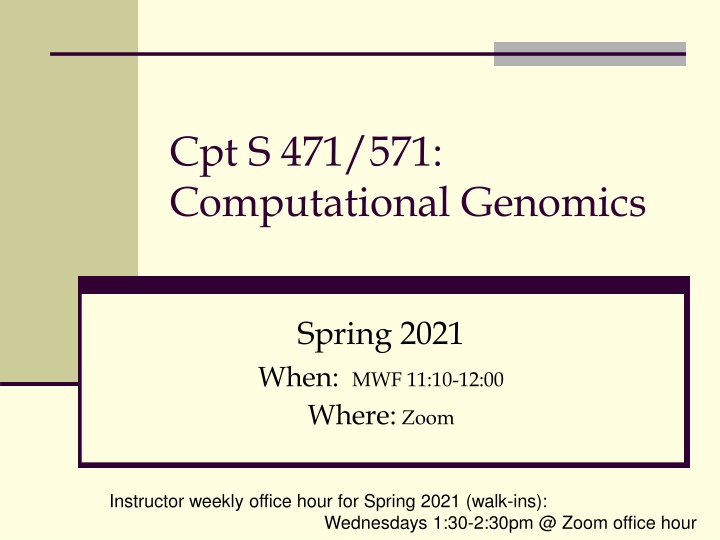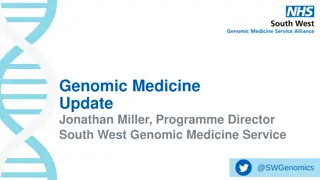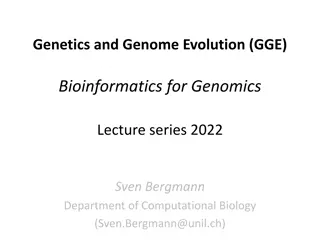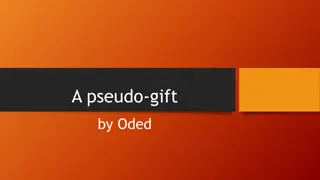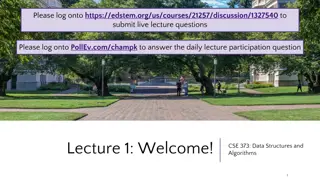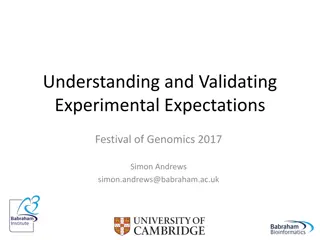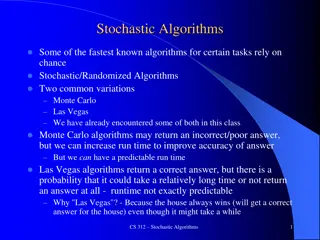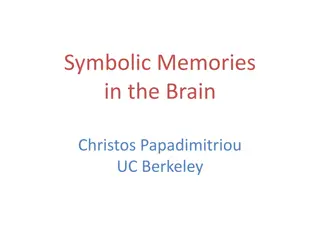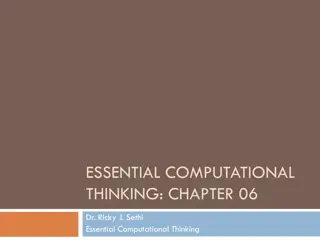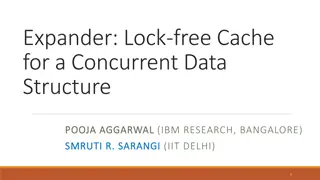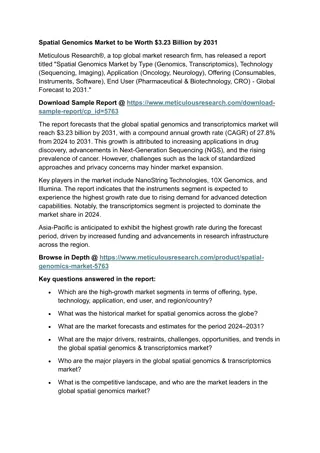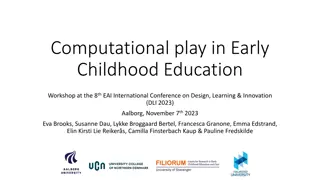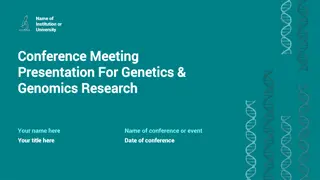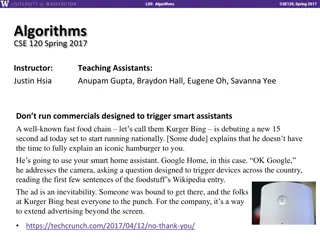Computational Genomics: Algorithms and Data Structures
Introducing algorithms and data structures for computational genomics, modeling biological problems as computer science problems, designing algorithms for biological problem-solving, and understanding the interdisciplinary role of computer science in modern biological sciences.
Download Presentation

Please find below an Image/Link to download the presentation.
The content on the website is provided AS IS for your information and personal use only. It may not be sold, licensed, or shared on other websites without obtaining consent from the author.If you encounter any issues during the download, it is possible that the publisher has removed the file from their server.
You are allowed to download the files provided on this website for personal or commercial use, subject to the condition that they are used lawfully. All files are the property of their respective owners.
The content on the website is provided AS IS for your information and personal use only. It may not be sold, licensed, or shared on other websites without obtaining consent from the author.
E N D
Presentation Transcript
Cpt S 471/571: Computational Genomics Spring 2021 When: MWF 11:10-12:00 Where: Zoom Instructor weekly office hour for Spring 2021 (walk-ins): Wednesdays 1:30-2:30pm @ Zoom office hour
Course Objectives To introduce the set of algorithms and data structures that have applications to computational genomics To be able to formulate and/or model a biological problem/system as a computer science problem To be able to design algorithms using appropriate data structures to solve the underlying biological problem To be able to appreciate the role of computer science in modern day biological sciences (interdisciplinary training) To see applicability of algorithms & techniques in other domains such as text mining, pattern matching, etc.
Course Organization Topics: Approximate string matching Exact string matching Probabilistic modeling for biological sequence analysis Applications Genome sequencing, and annotation, Read mapping, Gene identification, Clustering/transcriptomics, Phylogenetics.
Course Focus Problem Transformation Algorithms & Techniques Specialized Data Structures for Genomic Data
Course Material Lecture Notes on the course website Textbook References: Edited by S. Aluru. Handbook of Computational Molecular Biology, 2005. ISBN: 1584884061 (available through WSU digital library) Durbin, et al. Biological Sequence Analysis: Probabilistic Models of Protein and Nucleic Acids, 1999. ISBN: 0521629713 D. Gusfield. Algorithms on Strings, Trees, and Sequences: Computer Science and Computational Biology, 1997. ISBN: 0521585198 Other Useful References: C. Setubal and J. Meidanis. Introduction to Computational Molecular Biology, 1997. ISBN: 0534952623 M.S. Waterman. Introduction to Computational Biology, 1995. ISBN: 0412993910
Prerequisites Cpt S 223/233/215 or equivalent (advanced data structures) CptS 350 or equivalent (algorithm design & analysis) Familiarity with basic Probability fundamentals Biological background NOT required but an interest and inclination to learn is! C/C++/Java/Python programming experience Perl not O.K.
Grading (for Cpt S 571) Homework problems (10%) 3 Programming projects (52.5%) 1 Final Exam (17.5%) Survey project (15%) - 6 weeks Propose papers and source material Oral presentation (during the last 2 weeks of class) 5-page survey paper/report Classroom participation (5%) Grading policy: curved
Grading (for Cpt S 471) Homework problems (12.5%) 3 Programming projects (62.5%) 1 Final Exam (20%) Classroom participation (5%) (No Survey project) Grading policy: curved
Course Webpage, Resources and Announcements http://www.eecs.wsu.edu/~ananth/CptS571 Contents to watch out for: Homeworks, projects Survey project details Lecture notes Tentative course schedule Links to several reference papers, handouts, and other useful web resources For assignment dropbox and Zoom lectures and recordings access, use WSU Blackboard: https://learn.wsu.edu/ All announcements & Discussions will happen on Piazza: https://piazza.com Please do NOT email me on my WSU email id unless both Piazza and Blackboard are down
Classroom practices Attend the lectures and participate! All lecture scribes will be posted on the Lecture Notes link (course website) after each class All lectures will be automatically recorded (available after class via Blackboard Zoom cloud recordings) Ask questions Unmute to speak up Turn on videos if you can (will be appreciated!) Use of chat is okay to respond to other classmates
Homeworks & Programming Projects Submit on WSU Blackboard dropbox (learn.wsu.edu) Due 11:59 pm PDT on the respective due dates -- times are exact. 10% late penalty for a 24-hour grace period No submissions allowed after that (no exceptions) PDF is preferred. Cover page
Late Submission Policy Extensions may be allowed under extraordinary circumstances Contact instructor at least 1 week prior to permission
Collaboration Policy All assignments should be done individually unless a specific problem states that "collaboration is permitted". "Collaboration" is defined as a discussion with other students in the same class (no outsiders allowed) aimed at obtaining a better understanding of the problem question and/or exploring potential approaches at a very high level that can lead to a solution. What is collaboration? What is NOT allowed: A discussion leading to a better understanding of the problem statement Presenting or showing or sharing in any capacity, your solution or the main part of it to another student (PS: this is allowed in team projects) A high level discussion aimed at arriving at a plausible approach to solving the problem Referring to an online/web document showing a solution to the same or highly related problem posed in the question All writing at the end should be 100% yours. Referring to other sources including previous batch student solutions
Collaboration Policy All collaborative efforts should be explicitly acknowledged/cited in the answer sheet by all the participants using the cover sheet. Regardless of whether you collaborate or not, the final writing in the answer sheet should be solely yours. No points will be deducted for collaboration as defined above. Any deviation from the above guidelines will be considered "cheating" and will be subject to academic dishonesty code. This includes sharing (or even showing of) your solutions, looking up solutions on the web and using them, etc. Depending on the level of offense, the instructor may decide to fail the student. You can learn more about Academic Integrity on your campus at http://conduct.wsu.edu
